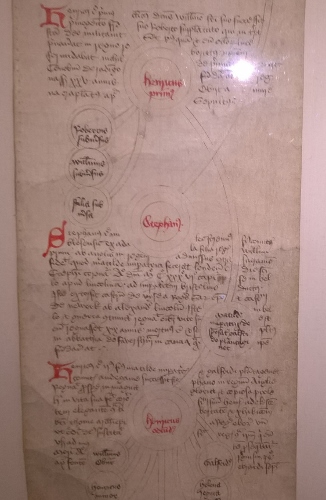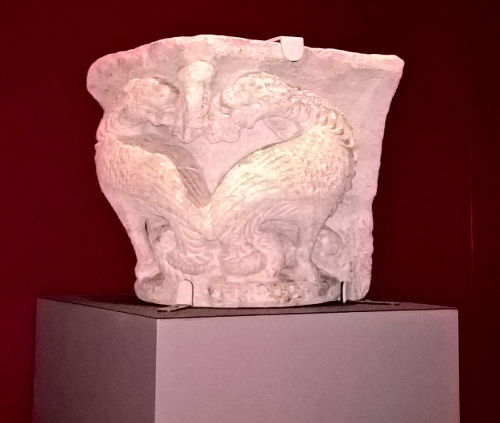Those two words, ‘medieval Europe’, conjure up images of splendor and power, knights and castles, monasteries and missionaries, plague and privation.
Recently, however, when we visited the Medieval Europe Exhibition at the Canadian Museum of History, I came away with a completely different feeling. Among the armour, jewellery, tapestry, and everyday utensils, many artifacts pointed back to the focus of medieval life, God. In fact, I was constantly reminded of God’s presence and of the presence of his people. By the end of our visit I felt a deep kinship with these people of long ago who were so similar to me in ways that matter.
There was a small, fragile prayer book exactly the size of the one I used last year. It was filled with color and beauty as well as words. Someone, centuries ago, repeatedly held that little book in his or her hands, treasuring its words, praising God, and praying. How did this person live? What were his or her dreams, worries, tasks, and everyday activities? Was he or she comforted by this little book and by its testimony to God’s goodness in the midst of a difficult world?
On the other hand, this large book of Colossians, written on vellum, brought home to me the fact that the Bible is, indeed, a library of books. How much space it must have taken up on shelves! How treasured each volume must have been!
Of course, there was much else as well: broaches, armor, dishes, parts of buildings, tapestries, floor tiles, an ancient shoe found in the Thames, documents, chests, and, everywhere, descriptions and discussion. For the first time that I can remember, I saw alabaster, an incredible substance that seems to glow quietly. Some of the artifacts, like the whistles for falcons and the taps for running water, surprised me, and so did some of the descriptions.
Parts of this exhibition gave substance to our study of ancient Britain, the world of Beowulf, Bede’s Ecclesiastical History of the English People and The Anglo-Saxon Chronicles. Reading these ancient documents is one thing. Seeing contemporary broaches and other artifacts is a completely different matter.
Dragons were everywhere. They showed up on buildings, in tapestries, and on floor tiles. Ever since I read and viewed The First Fossil Hunters, I’ve been keeping an eye out for dragons in history. I’ll never forget a report from the early 1800s of a small, colorful flying reptile that Cornwall’s farmers tried to exterminate because it harmed their chickens. (*Sadly, I no longer know exactly where I read that, but it was in a book somehow connected with our study of Beowulf.) Perhaps the fantastical creatures decorating medieval architecture and art were not merely figments of the imagination as is commonly assumed. Although evolutionary timescales say it is impossible that humans and dinosaurs overlapped, Biblical timescales suggest otherwise.
Even though the Medieval Europe exhibition curators probably did not have this goal, the entire exhibition seemed, to me, to be saturated with Christianity. Perhaps that was inevitable. Christianity was, after all, the central paradigm of those days, impossible to avoid. God was very real to medieval Europeans, and in that sense medieval society, grounded firmly in reality and religion, had a solidity and significance that ours misses despite our incredible medical, scientific, and technological advances.
For those of you who live near Ottawa, the Medieval Europe Exhibition is available until Jan 20, 2019; museum admission is free on Thursdays from 5-8 PM. You can see a trailer of this exhibition here. (Note that the museum is closed until Jan 12.)
—
If you enjoyed this article, you might want to follow me on Google+, where I often mention helpful or interesting ideas, friend me on Facebook where I show up once in a while and am still a newbie, or connect with me on GoodReads where I share what I read.
Disclosure: We visited the museum on a free Thursday evening and I am not compensated for this article.
This article may be linked to Inspire Me Monday, Raising Homemakers, Friendship Friday, Make My Saturday Sweet.







